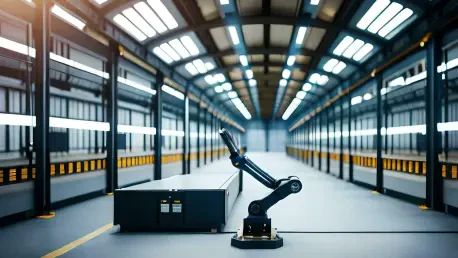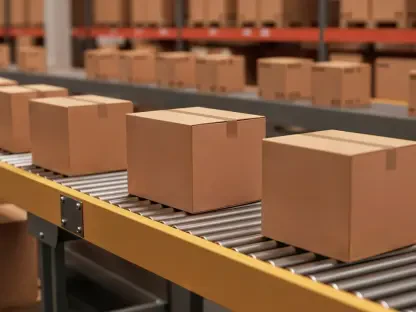Imagine a world where robots can learn complex tasks in a virtual sandbox before flawlessly executing them in unpredictable real-world environments, a vision that is no longer a distant dream but a tangible reality thanks to simulation-to-reality (Sim2Real) training. This groundbreaking approach is redefining robotics, and at RoboBusiness in Silicon Valley, this transformative technology emerged as a focal point, drawing innovators, developers, and industry leaders to explore how virtual simulations are bridging the gap to physical applications. Held as a premier platform for robotics advancements, the event showcased how Sim2Real is driving adaptability in sectors like logistics and e-commerce, setting a new standard for automation.
Showcasing Robotics Innovation in Silicon Valley
RoboBusiness, produced by WTWH Media, stands as a cornerstone for the robotics community, uniting developers and suppliers of commercial robots in a dynamic exchange of ideas. Hosted in the heart of Silicon Valley, the event featured over 60 speakers and more than 100 exhibitors, offering a comprehensive look at the latest in robotic technology. Its co-location with DeviceTalks West further expanded its reach, attracting professionals from medical technology and engineering fields to engage in cross-disciplinary dialogue.
Beyond its impressive scale, the event served as a critical hub for exploring cutting-edge topics like physical AI and Sim2Real training. With a diverse lineup of sessions, workshops, and networking opportunities, it provided a unique space for attendees to dive into both theoretical insights and practical solutions. This environment fostered discussions that are shaping the trajectory of robotics, making the event a pivotal moment for industry advancement.
Diving into Sim2Real Breakthroughs and Discussions
The spotlight at RoboBusiness fell heavily on Sim2Real training, with several key moments underscoring its potential to revolutionize robotics. Dedicated sessions on physical AI, technology unveilings, and interactive experiences like workshops highlighted the industry’s shift from rigid automation to adaptive, learning systems. These segments collectively illustrated how simulation is closing the divide between virtual challenges and real-world execution, offering a glimpse into a more flexible future for robotic applications.
Expert Insights on Physical AI Advancements
Among the standout sessions was a compelling talk by Prof. Ken Goldberg of UC Berkeley and Jeff Mahler, CTO of Ambi Robotics, focusing on the PRIME-1 foundation model. Their presentation explored scalable robotic manipulation through simulation, drawing from Goldberg’s pioneering work at UC Berkeley’s AUTOLab and Mahler’s development of AmbiOS, an AI-powered operating system for robots. They emphasized how Sim2Real training enables robots to make real-time decisions, a critical leap for handling dynamic tasks with precision.
Their discussion also shed light on practical implications, such as enhancing robotic reliability in high-pressure environments like warehouses. By leveraging vast datasets and virtual training, robots can now adapt to unexpected variables, a theme that resonated strongly with attendees. This session underscored the transformative power of combining academic research with industry innovation to push boundaries in robotics.
Tackling the Virtual-to-Real Divide in Panels
The Physical AI Forum at RoboBusiness offered a deep dive into pressing challenges through expert panel discussions. Topics ranged from multi-model decision agents for improved safety and performance to AI enhancements in ABB’s robotic systems. A recurring point was the need for smarter data curation to address the generalization gap, ensuring robots trained in simulation can perform effectively in diverse real-world scenarios.
Panelists reached a consensus that integrating virtual training with physical feedback is indispensable for creating adaptable robotic solutions. This approach not only boosts scalability but also mitigates risks in unpredictable settings, a concern for many industries adopting automation. These debates provided a roadmap for refining Sim2Real methodologies, sparking ideas among engineers and developers in attendance.
Engaging with Technology Through Interactive Sessions
Hands-on learning took center stage with workshops, live demonstrations, and startup events like the Pitchfire competition. These interactive components allowed participants to engage directly with Sim2Real concepts, witnessing firsthand how simulation translates to tangible robotic capabilities. From testing prototypes to exploring new software, attendees gained practical insights into the development process.
Such activities also fostered collaboration, bringing together developers, engineers, and industry leaders to exchange knowledge. The energy in these sessions was palpable, as participants brainstormed solutions to common hurdles in robotic deployment. This blend of learning and networking proved invaluable for translating theoretical advancements into actionable progress.
Spotlight on Innovations Like AmbiStack
A major highlight was the showcase of Ambi Robotics’ AmbiStack logistics robot, launched earlier this year. Trained virtually to stack random items with the precision of a 3D Tetris game, AmbiStack exemplified Sim2Real success, demonstrating improved speed and accuracy in e-commerce operations. Its unveiling captured significant attention among the 100-plus exhibitors, signaling a leap forward for logistics automation.
Other exhibitions at the event further illustrated the breadth of Sim2Real applications, from precision tools to adaptive systems for varied industries. These displays underscored how simulation-based training enhances real-world performance, offering solutions to long-standing challenges. Attendees left inspired by the potential of such technologies to reshape operational efficiencies across sectors.
Reflecting on a Milestone for Robotics
RoboBusiness proved to be a defining moment for the robotics field, with Sim2Real training emerging as a catalyst for innovation. The event’s rich array of sessions, from expert talks to hands-on demos, highlighted the profound impact of simulation on robotic adaptability and deployment. It also reinforced the importance of collaboration between academia and industry, as seen in the contributions of thought leaders and cutting-edge companies.
Looking ahead, the insights gained from this gathering pave the way for actionable steps in advancing robotic technologies. Industry stakeholders should prioritize investment in data curation and adaptive AI systems to further bridge the virtual-to-real gap. By building on the momentum from Silicon Valley, the robotics community can accelerate the development of solutions that meet the complex demands of modern applications, ensuring a future where automation thrives in any environment.









